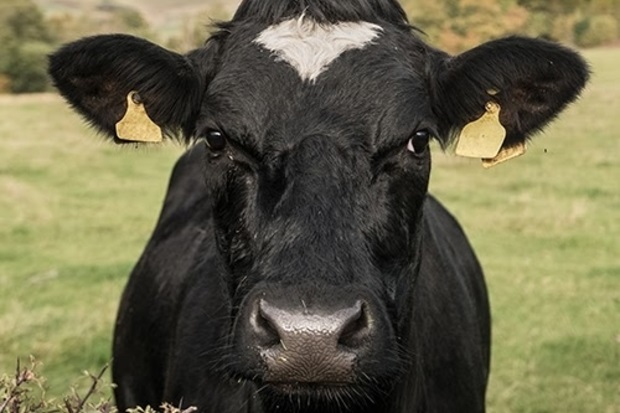Epidemiological Evidence from APHA Underpins WOAH’s BSE Negligible Risk Status classification for Great Britain
In a landmark achievement for British agriculture, the World Organisation for Animal Health (WOAH) has officially recognised England & Wales and Scotland, as two zones of the UK, as regions of negligible risk for Bovine Spongiform Encephalopathy (BSE), commonly known as “mad cow disease”. This status represents the highest level of safety certification and has huge implications for trade, public confidence, and the future of cattle management across the UK.

Countless teams across Defra, APHA, the devolved administrations, other Government departments, and many dedicated contributors both past and present played a vital role in making this achievement possible. Their hard work, insight, and commitment laid the foundation for a submission that reflects the best of British veterinary science.
This article focusses on the contribution of the Transmissible Spongiform Encephalopathy (TSE) team in APHA’s Department of Epidemiological Science.
How did the Data Systems Group (DSG) contribute to the WOAH BSE negligible risk status application?
The journey to securing WOAH's BSE negligible risk status for GB was anything but straightforward. It began all the way back in 2021 for Zone 1 (England and Wales), when we embarked on a detailed submission process. This was abruptly paused just hours before submission due to confirmation of a classical BSE case born less than 11 years prior to the date of submission. Months of exceptional hard work had to be put on hold.
Yet rather than viewing this as a setback, our teams saw it as an opportunity to reflect, recalibrate, and reinforce what we already do well. The incident shed light on the strengths of BSE management across GB, while prompting action in areas where improvements could be made. Crucially, the efforts made during that first submission weren't lost, we had started to build a comprehensive information repository that would be a springboard for the next round in 2024. However, in May 2023 the WOAH application process was revised to remove the “11 year rule” and placed a greater emphasis upon the date when the feed chain became free of ruminant derived protein meal, and the teams had to quickly adopt to meet the new format to align our response.
When it came to securing WOAH's BSE negligible risk status for GB, the APHA Data Systems Group (DSG) proved just how effective a robust data infrastructure can be.
At the heart of this success was the team's deep familiarity with the surveillance data, built over decades and its sophisticated systems that stored the data. Their work ensured the WOAH application was not only scientifically robust but was evidence based.
The DSG team leaned on several data systems to meet WOAH’s requirement:
- The TSE Surveillance System (TSESS) and the BSE case system were critical for interrogating records of all surveillance data and all reported BSE cases.
- The updated WOAH requirements meant tracking clinical signs of BSE too. This was managed through the Laboratory Information Management System (LIMS), which collected data from cattle postmortem examinations.
Together, these tools offered high-quality data for submission.
The surveillance work is also led by the DSG team, whose expertise covered every step of the data journey: from collection and cleaning to interpretation and presentation. We supplied critical historical data, spanning over thirty years which informed modelling projections, risk assessments, and epidemiological analysis.
How did the Risk Assessment Team contribute to the WOAH BSE negligible risk status application?
Risk assessments are concerned with the systematic compilation of data/evidence with the objective of providing an evidence base for risk management decisions. They have been regularly used since the first cases of BSE predominantly as a way of assessing the potential effects of the stringent controls that have been introduced to safeguard animal and public health. When it came to the application for BSE negligible risk status, an entry assessment considering entry of the BSE agent through the import of live animals, feed and other commodities and an exposure assessment considering the risk of exposure of the UK cattle population to the BSE agent were carried out. The robustness of the assessments relied on gathering high quality evidence and data concerning the import of animal by-products (ABPs) and live animals, disposal and rendering of ABPs, the National Feed Audit, specific mitigation measures in place and all relevant legislation and regulations. As both these were assessed to have a negligible risk, it was not necessary to carry out a consequence assessment, thus saving time and resources. It was a true collaborative effort and brought together evidence from many different work areas to demonstrate how the surveillance and controls in place within the UK have helped reduce the risk of BSE occurring.
How did the Modelling team contribute to the WOAH BSE negligible risk status application?
Mathematical modelling has played an important role during the years of the declining BSE outbreak. A key challenge in analysing BSE data is that the long incubation period (over 5 years on average) means that only a minority of infected animals are ever detected, we just see the tip of the iceberg. Models have been developed that are able to determine the true number of infected cattle – this is really helpful in determining trends and assessing the impact of surveillance and control policies e.g. how many infected animals will enter the food chain if I do X. These models, often combined with risk assessments, have been used to inform many policy decisions over the years to reduce controls and reduce the numbers of animals that need to be tested. For the BSE negligible risk status application, modelling was able to demonstrate both a significant declining trend in successive annual birth cohorts since the reinforced feed ban in 1996, and that recent BSE cases were consistent with that trend – this was very important as it demonstrated that BSE is under effective control in GB. Modelling enabled the estimation of the probability of any new infections, which was useful in putting recent epidemiological findings regarding the presence of old feed storage units on farm, a concern for WOAH, into context e.g. having a pre-1996 feed silo may be a risk, but the per animal rate of infection is only 1 in 275 million!
How did the Epidemiology Team contribute to the WOAH BSE negligible risk status application?
One of the key contributions from the Epidemiology Work Group to the application for negligible risk status was the GB Cattle Farmer Silo Survey. This work was initiated because the investigation into the 2021 classical BSE case showed that the most likely source of infection (although with high uncertainty) was that the cow had been given feed that had been stored in a feed silo that had been in use since before the 1996 reinforced feed ban (when all animal-source protein was prohibited in livestock feeds), based on the hypothesis that residual contaminated feed might have persisted in this old silo. Similarly, the 2024 classical BSE case in Scotland had probably been fed from an old feed silo.
This led to the policy question: how many farms in GB had old feed silos? In response, we helped design an on-line survey targeting cattle farmers in GB, led by Timm Konold, APHA Lead Scientist for TSE. Our analysis of the responses revealed that around 4% of farms had old silos and around 8% had other old feed storage units. While this was a small proportion, it still represented several thousand farms. Notably, farms that had experienced BARB BSE cases (BSE cases born after the 1996 feed ban) were more likely to have old feed storage units than other farms, suggesting a link between old silos and BARB BSE cases.
Findings from this survey informed updated guidance to farmers on reducing risk of disease from animal feed storage units and a DEFRA scheme to support BARB farms to remove old silos. The findings and actions were included in the WOAH application to demonstrate the action taken by GB to mitigate the risk of future BSE cases.
A compelling, data-driven submission with expertise from the DES specialist teams showcased GB’s long-standing commitment to BSE surveillance and control.
Learn more about APHA’s role in achieving the BSE negligible status in Timm Konold’s recent APHA science blog: BSE: From crisis to confidence



